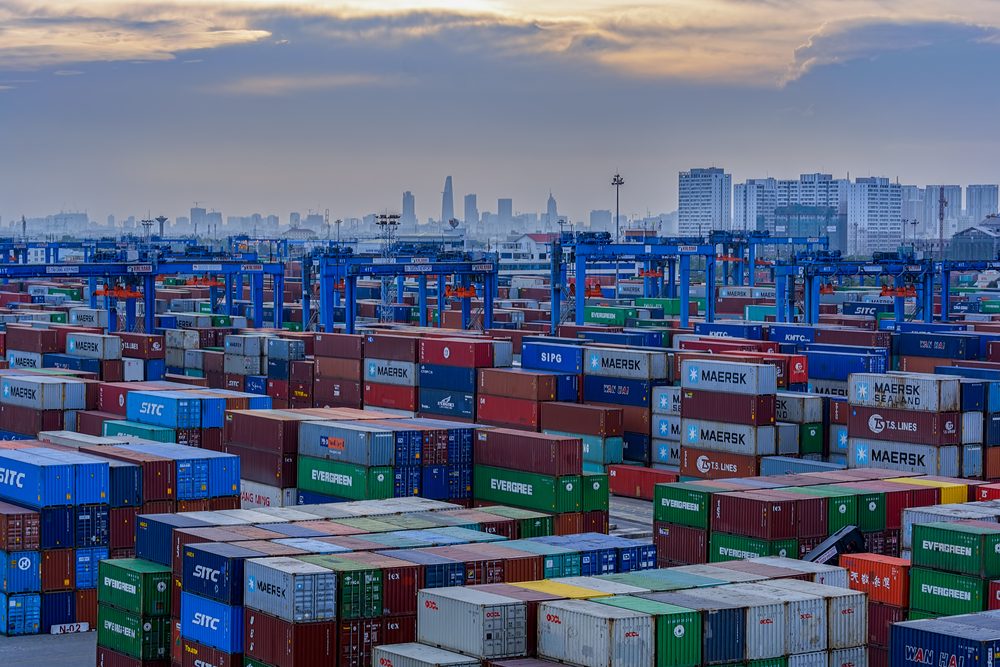Key (and sometimes surprising) findings from a recent trip to Vietnam.
Key Points
- Vietnam ranks as one of the top two or three countries in Southeast Asia in terms of growth and investment potential.
- Only 37% of the population lives in urban areas, compared to 65% in China, and it still has another generation of demographic growth ahead of it.
- Annual foreign direct investment (FDI) into Vietnam has averaged around US$20-25bn in recent years, but the Vietnamese government expects to secure new FDI commitments of US$30-35bn this year.
- Vietnam is making great strides to ascend the complexity and value-add curve and exploit the potential of its increasingly well-educated workforce.
I visited Vietnam’s capital Hanoi recently, conducting meetings with the International Monetary Fund (IMF), the State Bank of Vietnam and the Ministry for Planning and Investment, among others. In this Q&A, I highlight some key investment findings and elaborate on what surprised me most from this trip.
Why Vietnam, Why Now?
Vietnam ranks as one of the top two or three countries in Southeast Asia in terms of growth and investment potential. The country’s population is still predominantly low-to-middle income with a nominal annual per capita GDP of around US$3,000, but it has an expanding middle class. Only 37% of the population lives in urban areas, compared to 65% in China. In addition, the country still has another generation of demographic growth ahead of it.
How Do You View Vietnam’s Potential in The Broader Emerging-Markets Context?
We believe Vietnam is favorably positioned within the emerging-markets (EMs) context for several reasons. First, while many EMs are struggling with weak growth and high inflation, Vietnam appears to be a positive outlier. Real GDP is forecast to grow at around 6% per annum over the coming years according to agencies such as the International Monetary Fund (IMF). Although inflation is picking up, it is still moderate by global (and indeed regional) levels, owing to a high level of food self-sufficiency and some fiscal subsidies.
Secondly, the country has a very manageable debt level with public debt-to-GDP at less than 40%. Foreign debt makes up less than half of the total, and the country’s closely managed capital account should prevent destabilising portfolio outflows. Thirdly, and perhaps most importantly, Vietnam is a structural winner from the supply-chain realignments that are taking effect owing to deglobalisation, as companies seek to adopt a ‘China + 1’ strategy.
Does Vietnam Have a Strategy for Winning Foreign Direct Investment (FDI)?
We believe so, and I was honored to have the opportunity to meet a senior representative from the Ministry of Planning and Investment while in Hanoi. This is the government agency that works closely with foreign companies that have invested or are planning to make investments into Vietnam. It helps with factors such as deciding on location, land acquisition, securing regulatory permits and local supply-chain integration. In short, the agency makes investing into Vietnam easier for foreign companies.
A testament to its success is that Vietnam already has over 350 industrial parks throughout the country that enjoy favorable land availability, tax treatment and infrastructure connectivity. Annual FDI into Vietnam has averaged around US$20-25bn in recent years, but the Ministry expects to secure new FDI commitments of US$30-35bn this year – a meaningful increase.
What Are the Sources of FDI, and What Are the Main Industries?
This is where we believe the investment case for Vietnam gets even more interesting. Historically, a sizeable portion of FDI into the country has been in low value-add manufacturing industries such as textiles and apparel. However, Vietnam is making great strides to ascend the complexity and value-add curve and exploit the potential of its increasingly well-educated workforce. Consumer electronics and auto components are growing sources of FDI, with both Japan and South Korea being major investors. One thing I was surprised to discover is that, as foreign investment grows, it increases the development of Vietnam’s domestic industry players. A case in point is the information technology (IT) services industry.
I met a large Vietnamese outsourcing company, which provides software development and managed services for major international companies and has recently won some large contracts from Japanese customers. Although IT services have traditionally been viewed as a stronghold of the Indian economy, the company believes it can continue tapping into the growing pool of technology graduates in Vietnam to offer services at a price it estimates to be around 20% cheaper than India.
Do You See the Potential for Vietnam to Be the Next China?
One key takeaway from my trip is that Vietnam’s FDI-led development model is by no means tapped out yet and I think, with the supporting hand of the government, the country can continue to attract steadily increasing levels of FDI and work its way further up the value-add curve. Some basic and lower value-add industries may get displaced and relocate to other economies like Bangladesh, thus freeing up more capacity. In general, Vietnam’s development model has some clear parallels with the experience of China over the last 30 years: it is a state-directed, FDI-intensive and export-orientated country.
However, there are important reasons why we believe Vietnam is different from China and won’t replace it in terms of supply chains and exports. The most notable is scale, with Vietnam having less than a tenth of the population of China. China attracts around US$250bn in annual FDI, so even if that were to fall by half (an extreme scenario) owing to geopolitical competition, Vietnam would only have the capacity to gain about a quarter of this share. In other words, we estimate that the world would need another three ‘Vietnams’ to manage all the logistics from supply-chain reorientations!
How Does Vietnam Score in Terms of Climate and Sustainability Factors?
Newton’s responsible investment team, which uses comparative data from a range of providers, including the World Bank and MSCI, rates Vietnam as below average on environmental, social and governance (ESG) factors. The low governance score is primarily a function of a single-party government with low levels of transparency, constraints on media freedom and a track record of corruption.
During my trip to Hanoi, one of the notable political themes and talking points was the current crackdown on corruption that the government had recently initiated, particularly in the real-estate sector and for land acquisition, which is an encouraging development. Within the ‘E’ part of ESG there are also clear signs of progress. The government’s latest draft power-development plan aims to reduce coal as a share of Vietnam’s power mix from a third currently to less than 10% by 2045.
Over the same time frame, it seeks to grow renewable energy (wind and solar) to 50%.
Vietnam already produces a meaningful share of its power from hydroelectric sources owing to its geographic location on the Mekong River. However, climate change poses a serious threat to Vietnam, with the IMF forecasting in its latest report that without mitigation and adaptation the country could lose 10-15% of its GDP by 2050. It is therefore clear that the government is starting to take climate change seriously.
On social factors, there are initiatives in place to support ethnic minorities, but large inequalities persist, owing to a lack of education and infrastructure in certain regions. One encouraging development that I learnt from my meeting with the European Chamber of Commerce in Hanoi is that Vietnam signed a free-trade agreement with the European Union in 2020, and future FDI from that region is likely to come with much more stringent ESG terms and conditions.
How Can Foreign Investors Play Vietnam?
There remain several important restrictions for foreign investors that are a function of Vietnam’s stage of economic development as well as its political system. The most notable is the foreign-ownership limits across Vietnamese stocks. For sectors that are deemed extra sensitive such as banks and airlines, foreigners may only own up to 30%. Sensitive sectors like utilities, resources and real estate have a 49% limit. For non-sensitive sectors, such as the consumer sector, the limit is 100% although in practice many Vietnamese firms prefer to maintain local control by adopting a voluntary 49% limit.
There are many cases in which Vietnamese stocks are already at their foreign-ownership limit, which means that new prospective buyers will have to wait for a seller. There has been much speculation and anticipation about when Vietnam might be admitted to official emerging market status (from ‘frontier’ status) by index providers like MSCI and FTSE Russell, with an official government target of 2025.
For fixed-income investors, Vietnamese sovereign debt may be attractive given the country’s low debt-to-GDP level, attractive growth and positive balance of payments. However, the country’s treasury has abstained from making new hard-currency sovereign issuances in recent years, and the amount of outstanding US-dollar debt is very limited. Local-currency bond purchases face certain regulatory restrictions. In short, market access remains a challenge for both debt and equity investors, although this is expected to improve in the coming years.
What Other Risks Should Investors Be Aware Of?
Other than the climate-change risk mentioned already, we believe there are three risks that investors should take into consideration. The first is the impact that a global consumer recession would have on Vietnam, given the growing importance of consumer exports for the economy. Given the pace of Fed tightening and the early signs of a US consumer slowdown, this will be important to monitor.
Second is the risk of a Vietnamese real-estate bubble bursting. While nowhere near as extreme as China’s real-estate industry, house prices have appreciated sharply in recent years and some of the state-owned banks remain under-capitalized. The government is acting on the situation and is enforcing a +14% loan-to-growth quota for 2022 for the banking industry as a whole. We therefore view it as unlikely that the real-estate sector will have a systemic fallout.
Third is the geopolitical situation regarding China. Vietnam and China have an uneasy relationship and even went to war against each other in 1979. More recently, there have been tensions over maritime sovereignty. The Vietnamese government is pragmatic and maintains a constructive trade relationship with China, with China accounting for around 25% of Vietnam’s overall trade, a significant portion.
Any Concluding Thoughts?
It seems something of a cliché to remark on how attractive the Vietnam growth and investment story is, but being on the ground and having the opportunity to talk to companies, government officials and international agencies really reinforced how much development potential still lies ahead for Vietnam. FDI is entering the country at record levels and, in contrast to virtually every other country right now, Vietnam’s nominal per-capita income is rising faster than inflation. This pace of growth and prosperity can also be felt in some of the softer measures and personal anecdotes – the number of tower cranes, the Western consumer brands popping up on the high street and the replacement of two-wheelers by four-wheelers on the roads.
In innovation too, Vietnam is not standing still. A Vietnamese automotive company recently launched its own electric-vehicle range and will begin mass producing these in the coming years, including selling into the US market.
Finally, within my specialism, a quick word on politics and history. Vietnam remains a single-party government under the control of the Communist Party, with a high degree of state intervention including involvement of state-owned enterprises. While parallels with China from an ESG perspective are inevitable, it should be noted that the Vietnamese government is extremely conservative in many ways, including in its approach to the level of national debt, the pace of credit expansion and the liberalisation of the capital account. We believe investors should take encouragement and reassurance from the fact that Asia’s great economic stories of the last 50 years – including China, South Korea, Taiwan and Singapore – have all happened under a state-led and export-centric development model, a path that Vietnam is firmly on.
Any reference to a specific security, country or sector should not be construed as a recommendation to buy or sell this security, country or sector. Please note that strategy holdings and positioning are subject to change without notice. For additional Important Information, click on the link below. Important Information Issued by Newton Investment Management North America LLC ("NIMNA" or the "Firm"). NIMNA is a registered investment adviser and subsidiary of The Bank of New York Mellon Corporation ("BNY Mellon"). The Firm was established in 2021, comprised of equity and multi-asset teams from an affiliate, Mellon Investments Corporation. The Firm is part of the group of affiliated companies that individually or collectively provide investment advisory services under the brand “Newton” or “Newton Investment Management” (“Newton”). Newton currently includes NIMNA and Newton Investment Management Ltd. (“Newton Limited”). Material in this publication is for general information only. The opinions expressed in this document are those of Newton and should not be construed as investment advice or recommendations for any purchase or sale of any specific security or commodity. Certain information contained herein is based on outside sources believed to be reliable, but its accuracy is not guaranteed. Statements are correct as of the date of the material only. You should consult your advisor to determine whether any particular investment strategy is appropriate. Personnel of certain of our BNY Mellon affiliates may act as: (i) registered representatives of BNY Mellon Securities Corporation (in its capacity as a registered broker-dealer) to offer securities, (ii) officers of the Bank of New York Mellon (a New York chartered bank) to offer bank-maintained collective investment funds, and (iii) Associated Persons of BNY Mellon Securities Corporation (in its capacity as a registered investment adviser) to offer separately managed accounts managed by BNY Mellon Investment Management firms, including NIMNA and (iv) representatives of Newton Americas, a Division of BNY Mellon Securities Corporation, U.S. Distributor of Newton Investment Management North America. This material is for institutional investors only. This publication or any portion thereof may not be copied or distributed without prior written approval from the firm. No investment strategy or risk management technique can guarantee returns or eliminate risk in any market environment and past performance is no indication of future performance. Any forward-looking statements speak only as of the date they are made, and are subject to numerous assumptions, risks, and uncertainties, which change over time. Actual results could differ materially from those anticipated in forward-looking statements. Information about the indices shown here is provided to allow for comparison of the performance of the strategy to that of certain well-known and widely recognized indices. There is no representation that such index is an appropriate benchmark for such comparison. In Canada, Newton Investment Management North America LLC is availing itself of the International Adviser Exemption (IAE) in the following Provinces: Alberta, British Columbia and Manitoba. The IAE is in compliance with National Instrument 31-103, Registration Requirements, Exemptions and Ongoing Registrant Obligations.
Important information
Issued by Newton Investment Management North America LLC ("NIMNA" or the "Firm"). NIMNA is a registered investment adviser and subsidiary of The Bank of New York Mellon Corporation ("BNY Mellon"). The Firm was established in 2021, comprised of equity and multi-asset teams from an affiliate, Mellon Investments Corporation. The Firm is part of the group of affiliated companies that individually or collectively provide investment advisory services under the brand "Newton" or "Newton Investment Management" ("Newton"). Newton currently includes NIMNA and Newton Investment Management Ltd. ("Newton Limited").
Material in this publication is for general information only. The opinions expressed in this document are those of Newton and should not be construed as investment advice or recommendations for any purchase or sale of any specific security or commodity. Certain information contained herein is based on outside sources believed to be reliable, but its accuracy is not guaranteed. Statements are correct as of the date of the material only. You should consult your advisor to determine whether any particular investment strategy is appropriate.
Personnel of certain of our BNY Mellon affiliates may act as: (i) registered representatives of BNY Mellon Securities Corporation (in its capacity as a registered broker-dealer) to offer securities, (ii) officers of the Bank of New York Mellon (a New York chartered bank) to offer bank-maintained collective investment funds, and (iii) Associated Persons of BNY Mellon Securities Corporation (in its capacity as a registered investment adviser) to offer separately managed accounts managed by BNY Mellon Investment Management firms, including NIMNA and (iv) representatives of Newton Americas, a Division of BNY Mellon Securities Corporation, U.S. Distributor of Newton Investment Management North America.
This material is for institutional investors only. This publication or any portion thereof may not be copied or distributed without prior written approval from the firm.
No investment strategy or risk management technique can guarantee returns or eliminate risk in any market environment and past performance is no indication of future performance.
Any forward-looking statements speak only as of the date they are made, and are subject to numerous assumptions, risks, and uncertainties, which change over time. Actual results could differ materially from those anticipated in forward-looking statements.
Information about the indices shown here is provided to allow for comparison of the performance of the strategy to that of certain well-known and widely recognized indices. There is no representation that such index is an appropriate benchmark for such comparison.
In Canada, Newton Investment Management North America LLC is availing itself of the International Adviser Exemption (IAE) in the following Provinces: Alberta, British Columbia and Manitoba. The IAE is in compliance with National Instrument 31-103, Registration Requirements, Exemptions and Ongoing Registrant Obligations.





